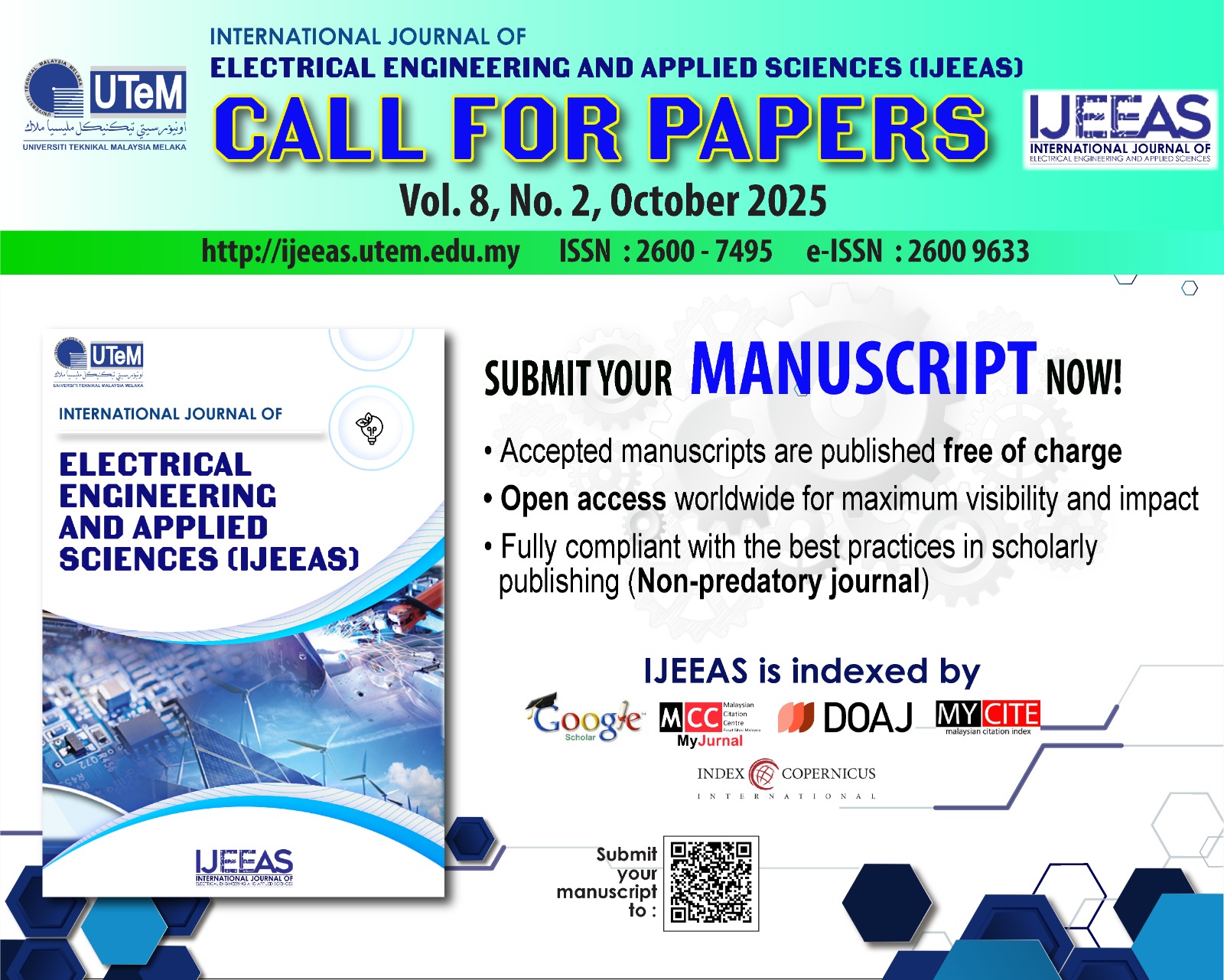Recyclable Beverages Containers for Reverse Vending Machine Sorting Mechanism using Image Processing Technique
Abstract
Waste management is one of the vastest obstacles in society today; thus, reverse vending machine (RVM) is here to deal with this obstacle. Some of the reverse vending machines can classify limited objects since they use sensors as the classification approach. Besides that, the sensor has a minimal lifespan and is expensive. This paper presents a modern image processing technology for the reverse vending machine to carry out classification for sorting mechanism. This approach supports the RVM in classifying three beverages containers which are aluminum cans, drink carton boxes, and polyethylene terephthalate (PET) bottles. Image processing is a standard technology that is used in face detection which provides surveillance and tracking of people in real-time. The method of image processing that used in this project is image enhancement, image segmentation, features extraction, and image classification. The image processing method is highly convenient in classifying the beverages containers because it helps to filter and enhance the image and produce information for machine interpretation. By using the image processing method, the beverages containers can be classified based on types and segregated accordingly.
Downloads
Downloads
Published
How to Cite
Issue
Section
License
Authors who publish with this journal agree to the following terms:
- Authors retain copyright and grant the journal right of first publication with the work simultaneously licensed under a Creative Commons Attribution License that allows others to share the work with an acknowledgement of the work's authorship and initial publication in this journal.
- Authors are able to enter into separate, additional contractual arrangements for the non-exclusive distribution of the journal's published version of the work (e.g., post it to an institutional repository or publish it in a book), with an acknowledgement of its initial publication in this journal.
- Authors are permitted and encouraged to post their work online (e.g., in institutional repositories or on their website) prior to and during the submission process, as it can lead to productive exchanges, as well as earlier and greater citation of published work (See The Effect of Open Access).







